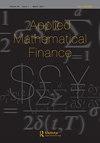Fragmentation, Price Formation and Cross-Impact in Bitcoin Markets
Q3 Mathematics
引用次数: 5
Abstract
In the light of micro-scale inefficiencies due to the highly fragmented bitcoin trading landscape, we use a granular data set comprising orderbook and trades data from the most liquid bitcoin markets, to understand the price formation process at sub-1-second time scales. To this end, we construct a set of features that encapsulate relevant microstructural information over short lookback windows. These features are subsequently leveraged, first to generate a leader–lagger network that quantifies how markets impact one another, and then to train linear models capable of explaining between 10% and 37% of total variation in 500 ms future returns (depending on which market is the prediction target). The results are then compared with those of various PnL calculations that take trading realities, such as transaction costs, into account. The PnL calculations are based on natural taker strategies (meaning they employ market orders) associated with each model. Our findings emphasize the role of a market's fee regime in determining both its propensity to lead or lag, and the profitability of our taker strategy. We further derive a natural maker strategy (using only passive limit orders) which, due to the difficulties associated with backtesting maker strategies, we test in a real-world live trading experiment, in which we turned over 1.5 M USD in notional volume. Lending additional confidence to our models, and by extension to the features they are based on, the results indicate a significant improvement over a naive benchmark strategy, which we also deploy in a live trading environment with real capital, for the sake of comparison.比特币市场的碎片化、价格形成和交叉影响
鉴于比特币交易环境高度分散导致的微尺度低效率,我们使用了一个颗粒数据集,包括来自最具流动性的比特币市场的订单和交易数据,以了解低于1秒时间尺度的价格形成过程。为此,我们构建了一组特征,这些特征通过短的回望窗口封装了相关的微观结构信息。随后利用这些特征,首先生成一个更大的网络,量化市场如何相互影响,然后训练线性模型,能够解释500毫秒未来回报(取决于哪个市场是预测目标)中总变化的10%到37%。然后将结果与考虑交易现实(如交易成本)的各种PnL计算结果进行比较。PnL的计算基于与每个模型相关的自然接受者策略(意味着它们采用市场订单)。我们的研究结果强调了市场收费制度在决定其领先或落后的倾向以及我们的接受者策略的盈利能力方面的作用。我们进一步推导了一个自然的制造商策略(仅使用被动限价单),由于回测制造商策略的困难,我们在现实世界的实时交易实验中进行了测试,其中我们以名义交易量成交了150万美元。为我们的模型提供了额外的信心,并扩展了它们所基于的特征,结果表明比天真的基准策略有了显著的改进,我们也在真实资本的实时交易环境中部署基准策略,以便进行比较。
本文章由计算机程序翻译,如有差异,请以英文原文为准。
求助全文
约1分钟内获得全文
求助全文
来源期刊

Applied Mathematical Finance
Economics, Econometrics and Finance-Finance
CiteScore
2.30
自引率
0.00%
发文量
6
期刊介绍:
The journal encourages the confident use of applied mathematics and mathematical modelling in finance. The journal publishes papers on the following: •modelling of financial and economic primitives (interest rates, asset prices etc); •modelling market behaviour; •modelling market imperfections; •pricing of financial derivative securities; •hedging strategies; •numerical methods; •financial engineering.
 求助内容:
求助内容: 应助结果提醒方式:
应助结果提醒方式:


